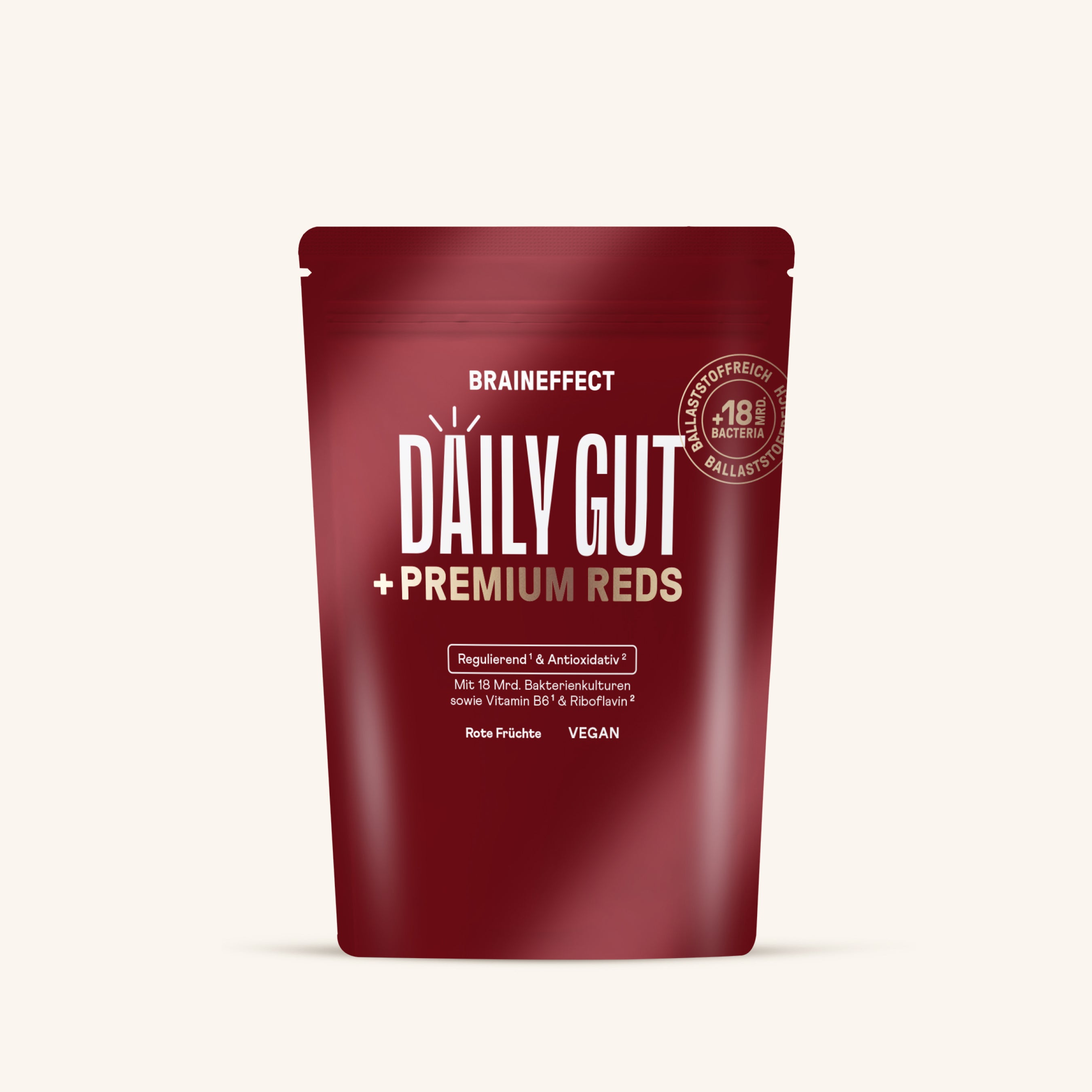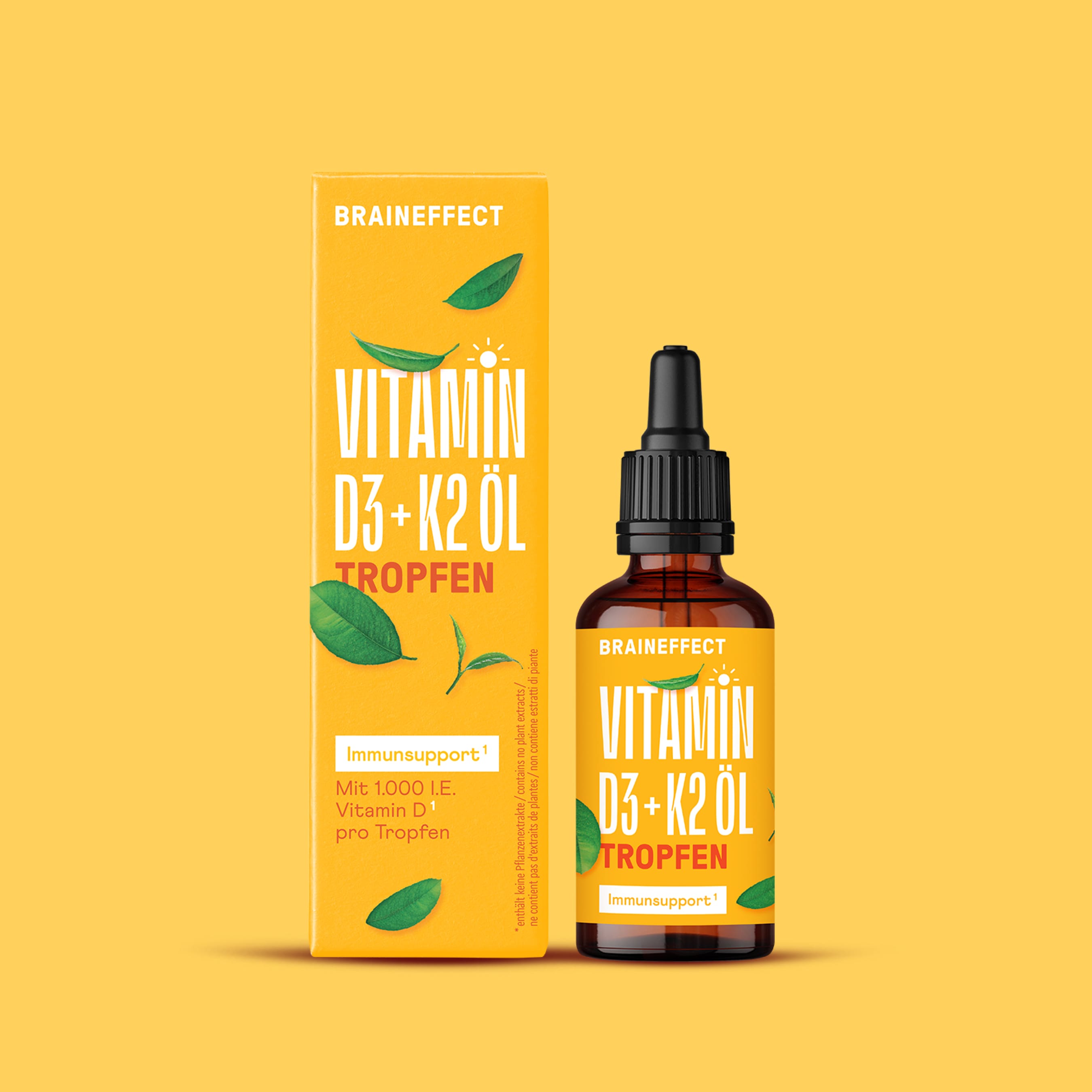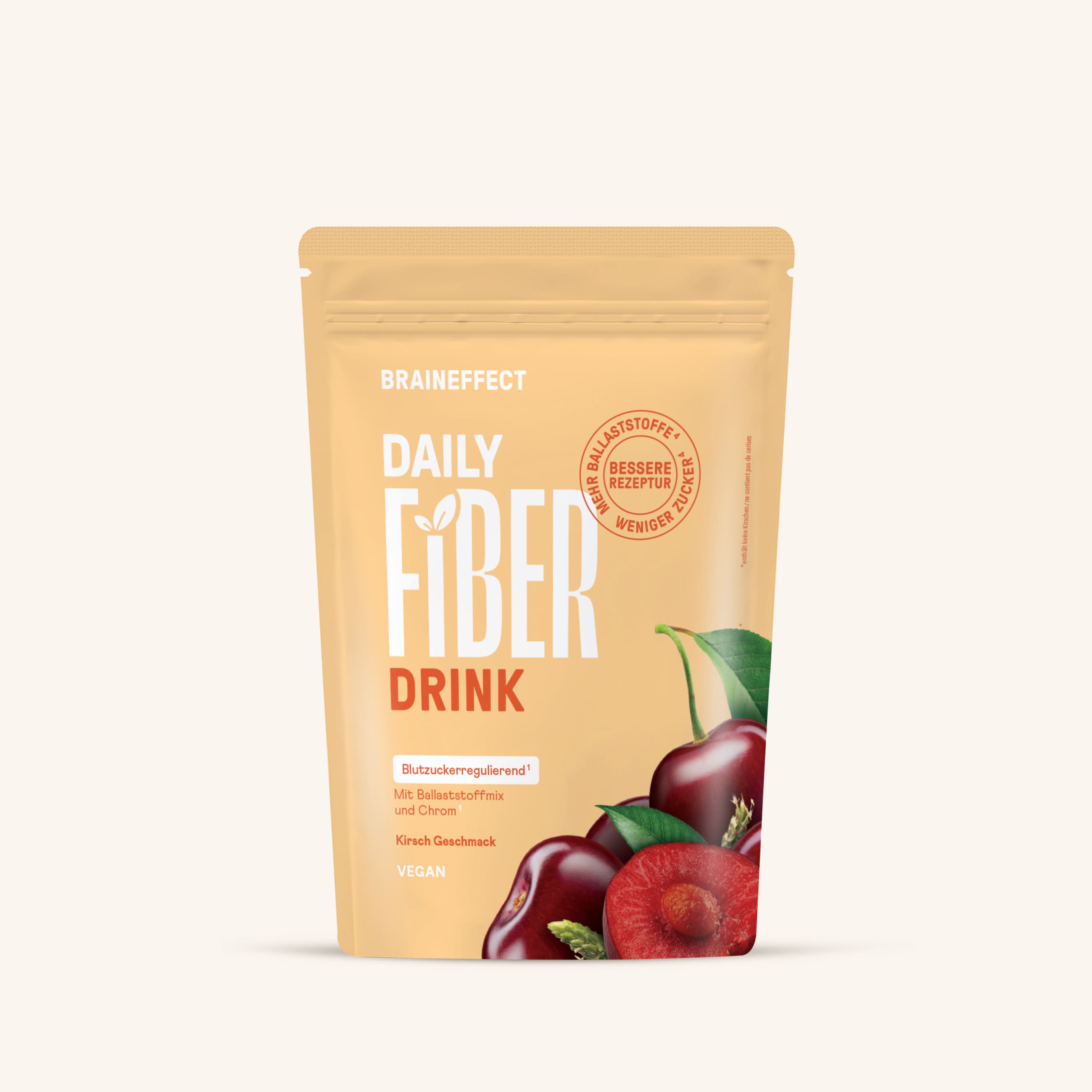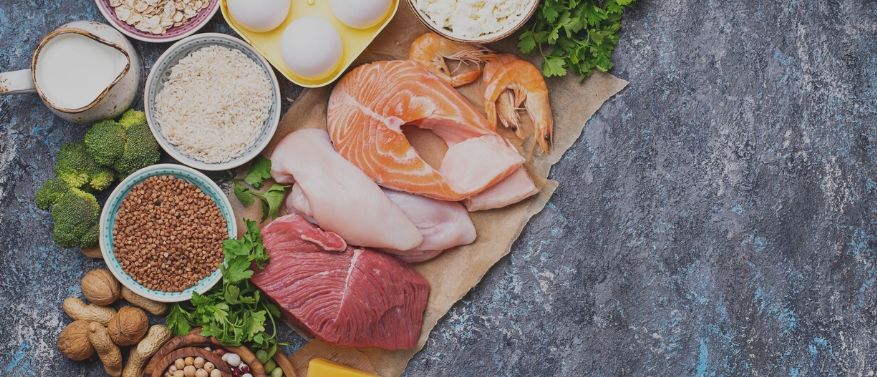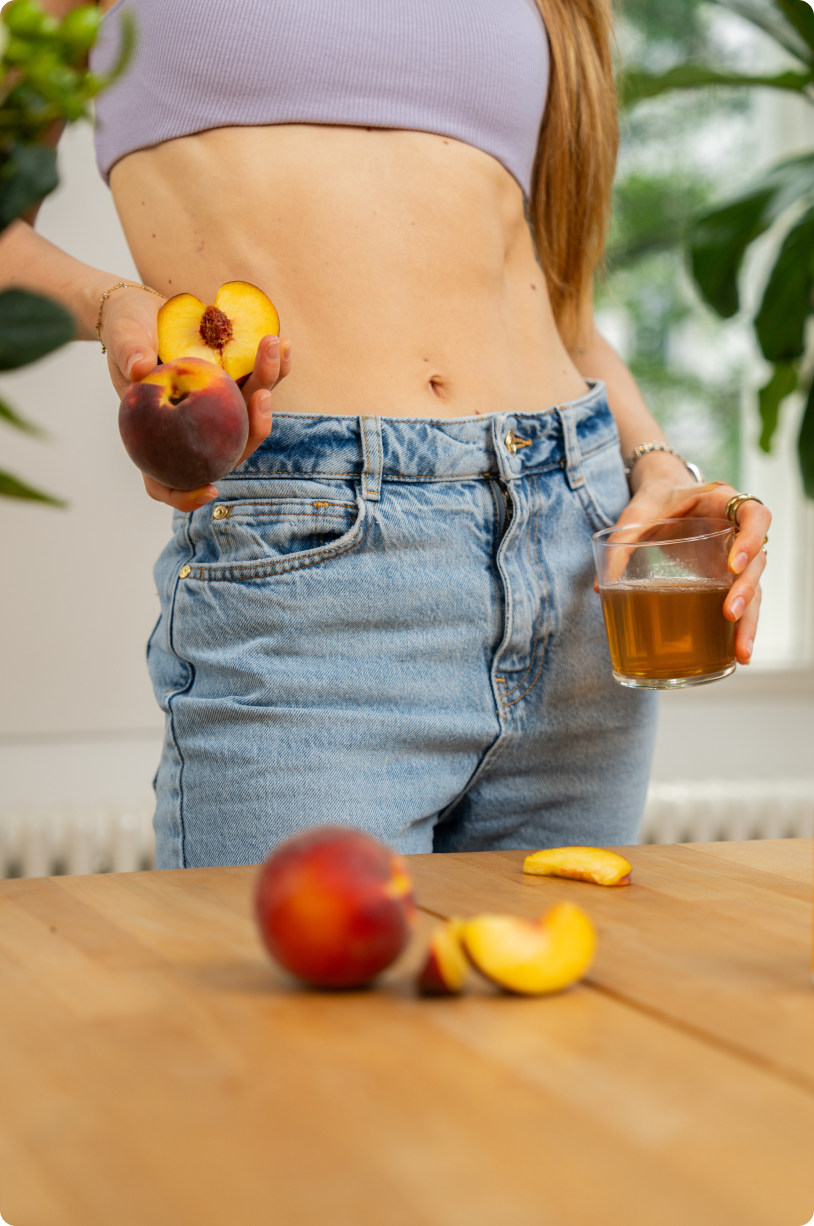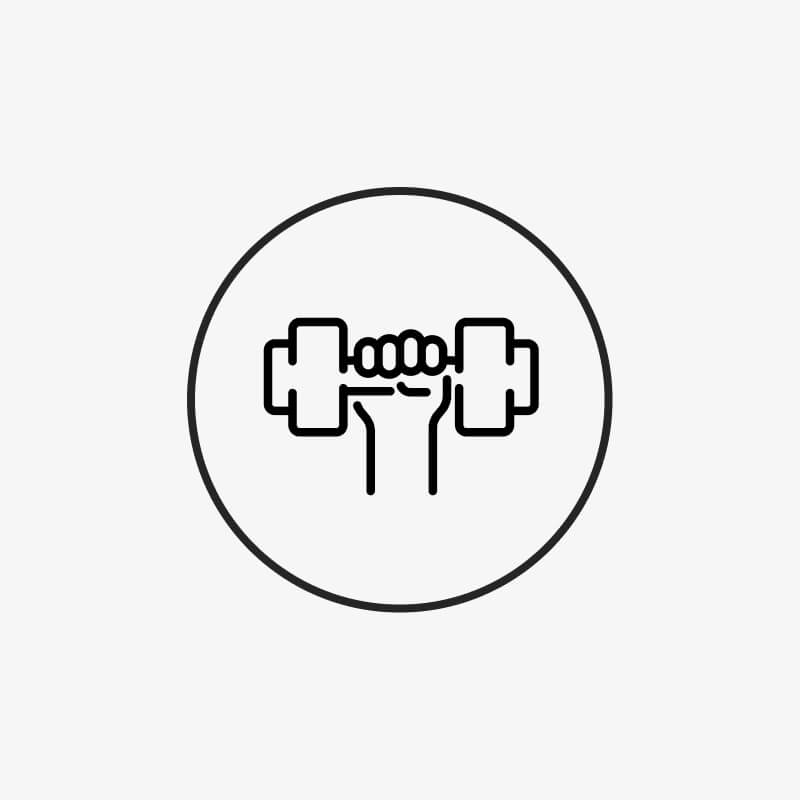Proteins, along with carbohydrates and fats, are macronutrients. Learn more about their role in your body here.
Table of contents
1. What are proteins?
Proteins, often called albumen, are macronutrients along with fats and carbohydrates. Unlike the other two , however, proteins are not primarily responsible for energy production within our cellular metabolism.
Proteins are indeed involved in a variety of vital metabolic processes. But what are proteins actually made of? Protein actually has a very interesting, characteristic structure: A protein consists of two amino acids that are chemically bonded together.
In this way, the amino acids can form long, flexible chains, known in technical terms as peptide bonds. However, proteins are by no means just long, fixed bonds of cellular material.
We now know that the structure of proteins contains, among other things, precisely constructed moving parts that can trigger specific chemical reactions [1].
2. Why does your body need protein?
Proteins are incredibly versatile . This makes the question "What is a protein?" perhaps a little more complex than expected. Proteins can not only build and break down cells , they can even initiate communication between cell groups!
Proteins can thus fulfill many different functions for our bodies. Depending on the specific function of a protein, different types of proteins are distinguished:
- So-called structural proteins give cells their shape . The best-known representatives of this protein group are collagen , elastin , and keratin . Collagen, in particular, is a structural element found throughout the body: in addition to skin and connective tissue, it also supports the normal function of joints , ligaments , and tendons .
- Transport proteins, on the other hand, serve to transport specific substances (usually fat or oxygen). The target site of this process is usually within the same cell or in the immediate vicinity of the cell. In rare cases, however, it can also be located far away from the first cell. This type of protein includes primarily myoglobin , albumin , and hemoglobin .
- Storage proteins help the body store vital substances . The best-known representative of this protein class is ferritin , which is responsible for storing the mineral iron .
- Contractile proteins , for example, ensure that muscles can contract . In addition to myosin, actin and dynein , among others, belong to this class. They help us move, coordinate, and stretch.
- As the name suggests, protective proteins support our body in triggering protective mechanisms. For example, in the blood, they help with the formation and activation of antibodies for the immune system and, in the form of fibrinogen, also with blood clotting .
- Some hormones also belong to the class of proteins. So-called proteohormones , such as insulin or ghrelin , regulate various vital processes. Insulin regulates blood sugar levels , while ghrelin controls the balance between hunger and satiety . Within the class of proteohormones, hormones are further differentiated based on the length of their molecular chains.
- Enzymes are also, in most cases, proteins. They function as so-called biocatalysts , primarily responsible for triggering certain chemical reactions in the body. While some enzymes have a very specific function, others can participate in a variety of different types of reactions.
- The amino acids necessary for protein formation, by the way, form a separate class of proteins. As you already know, they are important for the formation of long-chain protein molecules. The nine essential amino acids, in particular, play a key role in our diet, as we can neither produce them ourselves nor store them for extended periods.

3. How much protein you need daily
The German Nutrition Society recommends a daily protein intake of 0.8 g per kg of body weight for healthy adults [2]. For children and adolescents, the daily protein requirement is somewhat higher : to support normal growth, they need 0.9 g per kg of body weight .
Pregnant and breastfeeding women also need to consume a higher amount of protein to ensure the embryo or infant receives sufficient nutrients: the daily recommendation increases by approximately 20 to 30%.
Athletes represent another special group in this context. Due to their increased muscle load, a significantly higher daily protein intake is often recommended: Depending on the sport and training goal, the ideal protein intake can rise to 1.3 to 1.8 g per kg of body weight [3].
4. Good sources of protein
In general, there are both good animal and vegan protein sources . To assess how good a protein source is for you, you can use the so-called " biological value ." The primary quality indicator is the number of essential amino acids present in a food.
As a rule of thumb, you can remember that animal protein sources are almost always biologically more valuable than plant-based ones. The amount of a protein is somewhat less important than its biological value. For orientation, you should first take a look at the amount of protein contained in foods:
Animal protein per 100 g
- Chicken: 31 g
- Serrano ham: 30 g
- Harzer cheese: 30 g
- Turkey: 29 g
- Tuna: 29 g
- Beef: 25 g
- Salmon: 20 g
- Seafood: 21 g
- Quark: 13 g
- Chicken egg: 13 g.
Plant protein per 100 g:
- Lupin beans: 40 g
- Soybeans: 36 g
- Almonds: 24 g
- Flaxseed: 25 g
- Peanuts: 25 g
- Mung beans: 23 g
- Lentils: 23 g
- Peas: 22 g
- White beans: 21 g
- Kidney beans 20 g
- Chickpeas 20 g
- Hemp seeds: 20 g
- Chia: 17 g
- Cashews: 17 g
- Amaranth: 16 g
- Quinoa: 15 g
- Walnuts: 14 g
- Oat flakes: 13 g
- Buckwheat: 13 g
- Millet: 11 g
- Tofu: 11 g.
To achieve the highest possible biological value , you should always try to combine different protein sources . If your lifestyle allows, a mix of animal and plant protein sources is ideal.
By combining different plant-based protein sources correctly, even as a vegan or vegetarian, you can obtain all essential amino acids and achieve the same high biological value as with animal-based foods.

Vegetarians should try to combine chicken eggs with potatoes and curd cheese from time to time, while vegans should stick to combinations with lots of pulses and wholegrain rice.
It can be helpful for both groups to occasionally indulge in protein-rich breads and regularly snack on seeds and nuts . Soy products also score highly with their solid protein content and good biological value.
5. Proteins for muscle building
You basically already know: Proteins like myosin are central to normal muscle function. But did you also know that approximately 20% of your total muscles are made up of protein ? No wonder it plays such an important role in muscle building.
So, if you're in a muscle-building phase , each of your main meals should contain at least 20g of protein . If you're specifically training for strength, it's best to aim for about 0.3g of protein per kg of body weight.
The timing of your protein intake is also important: It's best to eat at least three to four times a day and switch your snacks and between-meals to high-protein options. It's ideal to consume protein sources with a good amino acid profile before , between , and after training .
Although you should always try to meet your protein needs through natural foods, you can also rely on protein supplements with specifically tailored amino acid formulations, especially during or immediately after training.
BRAINEFFECT HACK : You've already learned that your body needs all essential amino acids to build muscle. To ensure you get all the amino acids you need quickly and easily, we've developed COMPLETE AMINOS and packaged them in a refreshing workout drink.
6. Proteins for weight loss
High-protein diets aren't just popular among athletes. A protein-rich diet can also be helpful if you want to lose a few pounds . There are two main reasons for this: Firstly, proteins stimulate the release of the satiety hormone ghrelin , and secondly, they also support the reduction of body fat [4].
In the spirit of a low-carb diet, you reduce the carbohydrates in your diet by eating a diet rich in protein and fat. Carbohydrates trigger the release of insulin, which then ensures that glucose enters the cells and stimulates the production of fat.
Without carbs, your body has to meet its energy needs overnight from its own fat reserves. So, if you eat something rich in protein instead of a carbohydrate-rich meal, you 'll provide your body with valuable amino acids and, at the same time, give it a pleasant and long-lasting feeling of satiety .
7. What happens if there is a protein deficiency?
First of all, let's be reassured: Protein deficiency is extremely rare in Germany. Unless you have kidney failure or severe malnutrition, it should be quite difficult for you to create a protein deficit at all. In Germany, the average daily protein intake is 100g – which is more than enough in most cases!
Symptoms of protein deficiency include:
- fatigue
- Susceptibility to infection
- Hair loss
- Performance decline
- Dry skin
- Brittle nails
- Sleep disorders
- Cravings.
These symptoms, by the way, result from the lack of proteins in the metabolic processes described above. Susceptibility to infections results from the lack of protective proteins, and cravings from weakened ghrelin regulation. Dry skin and nails are often due to depleted collagen and keratin stores.
Nevertheless, the symptoms of protein deficiency are very nonspecific . Many of the complaints listed can also be due to mineral deficiencies or acute stress.
If you notice these symptoms, you should stay calm and see a doctor first. The best thing to do is simply ensure you're getting enough protein by eating a balanced, high-protein diet.
8. Conclusion
Protein is one of the most important nutrients of all! As key aids to our cellular metabolism, proteins are involved in numerous processes. Depending on their function in the body, they can be divided into subclasses that have protective, structural, and storage functions.
Some hormones and almost all enzymes are also proteins. Since proteins are formed from amino acids, it is important that we primarily consume the nine essential amino acids through our diet. This is best achieved by combining animal and plant protein sources with high biological value.
A slightly increased protein intake also promotes muscle building in athletes and can also aid weight loss by regulating the satiety hormone ghrelin. Since protein supply is very good in industrialized countries, you generally don't have to worry about a deficiency.
9. Sources
[1] Alberts B.; Johnson, A.; [...]; Lewis, J. (2002), Molecular Biology of the Cell, 4th edition, available online: https://www.ncbi.nlm.nih.gov/books/NBK26911/.
[2] Richter, M.; Baerlocher, K.; [...]; Stehle, P. (2019), Revised Reference Values for the Intake of Protein, On behalf of the German Nutrition Society, Annals of Nutrition and Metabolism, Volume 74, p. 242 - 250, https://www.karger.com/Article/FullText/499374.
[3] Phillips, SM; Van Loon, LJC (2011), Dietary Protein for Athletes: From Requirements to Optimum Adaptation, Journal of Sports Sciences, Volume 29: Supplements, Issue 1, p. 29 - 38, https://www.tandfonline.com/doi/full/10.1080/02640414.2011.619204.
[4] Pesta, DH; Samuel, VT (2014), A high-protein diet for reducing body fat: mechanisms and possible caveats, Nutrition & Metabolism, Volume 11, p. 53, published online: https://nutritionandmetabolism.biomedcentral.com/articles/10.1186/1743-7075-11-53.
